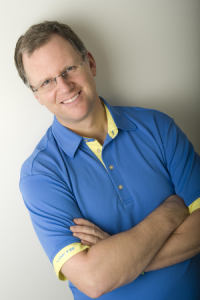
Golf performance coach Paul Dewland says it's OK to focus on swing mechanics during a round. But don't think about them. Feel them.
Golf performance coach Paul Dewland is coaching me on the mental game. I played in my club championship last weekend at Blue Springs, and it was a disaster. It was a self-fulfilling prophecy after my last blog on playing when you don’t have confidence in your swing. The experience told me: I need to keep focused on some of the early things Paul and I discussed (like witnessing my thoughts rather than being caught up in them), develop a coaching-student relationship wtih Core Golf’s Annie Mallory, and play in more stroke play events with galleries. I’m such a Nervous Nellie.
You’ve heard it, read it in Golf in the Kingdom and in Rotella’s tomes, and maybe even seen it in Bagger Vance.
That is, the road to enlightenment, soft draws and birdie putts is to hit golf shots in a serene Zen-like state focused on meditative stuff like breathing and visualizing wondrous shots.
You’re NOT supposed to think about mechanics. That’s earthly, secular and really bad.
But, I’ve heard countless touring pros talk about how a physical adjustment or swing key carried them to victory on the PGA Tour. The best players in the world think about mechanics under tournament pressure.
What gives?
I think this is why a lot of golfers struggle with this infernal game; we don’t know how to find a balance between the mental and physical parts of the game.
I’ve had great rounds where a specific swing key helped me, but I’ve also had solid rounds where I was thinking mainly about, say, being relaxed and swinging to my target.
My usual tendency, like most golfers, is to focus too much on mechanics. On bad days, I’m on swing thought No. 23 by the 11th tee. I become so pre-occupied with some stupid thing like turn the hips that I get tense, quick and hit all kinds of gruesome shots.
Hands up if this happens to you?
No kidding.
As avid golfers, we all know that focusing on mechanics is like eating chips while watching Leno; we know we shouldn’t, but we do it anyway.
Hitting bad shots is not fun. So we look for a solution to the problem and try to fix it. That sounds pretty normal, but I think that ‘fix it’ actually means ‘control it.’
Here’s the problem: I cannot control things external to me. I cannot control my kids, neighbours, work associates… or even a golf ball.
According to Paul, I can only directly control three things: my thoughts, my emotions and my actions. Everything else is beyond my control. “You can influence external things, but you cannot control them,” he says.
Want proof? I can hit what feels and looks like a perfect drive, but it may hit a cart sign and bounce in the trees. Or I can tell one of my teenage sons to clean his room. Enough said.
The other key element is that when I think about my swing, I am using the left side of my brain, my analytical side. To play my best, I am best to rely on the right side of my brain, my creative side. (You’ve no doubt read this about a million times.)
But just as thinking exclusively about mechanics doesn’t work, niether does ‘focusing only on the target’.
So my questions is in practical terms that I can apply on the course, how do I find a balance between the mental and physical parts of the game?
Paul says a major problem for most golfers is just that: thinking.
They think in words about mechanics while hitting a shot. Such as ‘turn your shoulders under your chin, transfer your weight,’ etc.
But the brain doesn’t understand words. Seriously, folks. The body responds to physical feelings and images. Using words just creates confusion and tension, which leads to those off-the-world shots.
Instead, Paul says it’s OK to focus on a physical move in a practice swing. The key, however, is to feel the motion, rather than think , for example, ‘turn the left hip.’ When I go to hit the actual shot, I can feel that motion and connect it to a target. (I’m just getting the hang of it, but it does seem to work. I’ll report back in more detail.)
In this way, I rely on the right side of my brain to execute the shot, my attention is directed to the target—because that’s where the ball is supposed to go—and I give myself the best chance of hitting a good shot.
It may not be a great shot, but it’s likely to be playable–unlike when I’m tense, thinking, and prone to swinging spasmodically and the ball can go anywhere.
Hmm, how’s that like my life? When I try to rigidly control things, they rarely work out very well. But if I chill and let things almost take their own course, the results are usually ok. Maybe not perfect, but good enough.
Cool.
